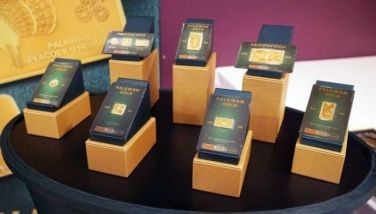Teaching organic basics to the IPs
You may think Indigenous Peoples (IPs) or cultural communities may already have innate knowledge about organic and natural farming. The fact that they live in natural habitats makes one surmise that they practise regenerative agriculture and all the natural farming methods which our ancestors did.
With the entry of commercial fertilizers and chemical pesticides in the market, they unfortunately are not spared or protected from what destroys or eclipses traditional knowledge. Because these commercial preparations are free or donated, the tribal people readily use them, much to the demise of age-old natural methods.
What is interesting to note is that these come free along with tools like pruning shears, but many do not come with the instructions for use. So a fertilizer is used inappropriately and produces foliage or leaves, but without fruits or flowers! They have shears that have rusted due to lack of knowledge on maintenance of these simple tools. So our trainers recommended they clean them with a natural vinegar solution (fermented banana is like alcohol) to disinfect pruning shears that they can wear on their belts. The shears must be disinfected between plants as diseases can spread when these are used without disinfecting. Simple. Efficient. Old world knowledge that has worked since the beginning of time.
We visited three tribes in the hinterlands of Bukidnon and what a revelation even for us, as trainers for coffee production and processing, that old reliable methods such as organic composting sounded so new an idea to these upland dwellers. They can actually make their own compost, their own pest controllers from madre de cacao leaves, garlic, onions, pepper and ginger. Similar to concocting a mix for sawsawan (dipping sauce), farmers can actually make their own tonics, teas and solutions of what works in their farm. Now that’s sustainability in the real sense of the word.
They excitedly took down notes, asked a lot of questions and were very open to learning the new “old” stuff that natural farming is composed of. The answers to their challenges were right under their noses, so to speak. We got leaves and animal manure from around the area and taught them how to “turn” the compost to make sure a micro-biome develops in the mound we started.
Note that there is no electricity in most of these upland communities and they rely only on solar power for simple lights, and there also is no WiFi signal to communicate with the rest of the world. So our trainers take the trek for almost an hour, unless a 4x4 vehicle is available. That is how far away they are from basic necessities, and sustainability really means going back to what their ancestors used to do. Make your own compost, grow your own food.
We shared about basic knowledge on fertilizers – NPK for nitrogen, phosphorus and potassium – and what the numbers on sacks of fertilizers meant (e.g; 14-0-0, 14-14-14 and other variants). We shared how honeybees need to be around flowers and how they can pollinate crops, and why biodiversity is important.
If you think about it, these are “old world” information, but clouded by so much information from the internet or sales agents who sell their “wonder” products to the NGOs who support these IPs, and what you get is a confused datu (chieftain) who cannot tell what is old truth and what are new ideas about increasing yield of trees and decimating pests and insects.
But I would like to think we built trust between our trainers and the IP communities we visited. Firstly, we were not there to sell them anything – just old ideas that can be used in their farms. We were there to show them how to use the pruning shears to better the condition of their trees and make mulch in the process. We showed them how easy it is to not depend on commercial preparations but on stuff they can get from their own backyards. Self-sufficiency is the order of the day. And that was much appreciated, as seen in their level of interest as we conducted the “Train the Trainors” program. The chieftains set their egos aside and listened to what we had to say.
Ultimately, we did not teach them anything like rocket science. It was simple information to grow their own food, care for their coffee trees and make their own fertilizers and pest control sprays. And they brought in women and the youth to listen in so they can learn together. Maybe what we said was starting to make sense because they participated in all the activities, including a first time “coffee tasting” session. They now are excited to “taste” the results of our experiment – to use organic and natural methods, to prune their coffee trees and finally to sort their produce and make sure they only produced quality coffee.
I managed to buy some green coffee to roast back home so we can send them their coffee as roasted by us. And they can compare our roast with what they are used to serving at the tribal hall – sometimes a watery brew made from old ground coffee powder, sometimes a brew that had a ‘diesel’ or petrol after taste. It’s time they tasted what potential good taste their coffee has.
I wanted to learn as much from them as they wanted to learn from us. As we learned about their culture, they learned about today’s coffee market preferences. As we learned to partake of their native snacks like boiled sweet potato and cassava boiled in coconut milk, they also tried donuts and fried chicken our sponsors brought for lunch. It was a true exchange of yesterday’s culture and today’s food and drinks. But what is common and has not changed is coffee.
I look forward to seeing them again to check what they have applied among our many suggestions to make their coffee sustainable, organic and a premium product.
That’s what we have to do – one sitio at a time, one community at a time.
- Latest





















